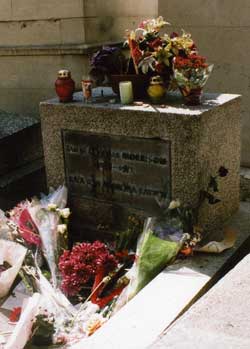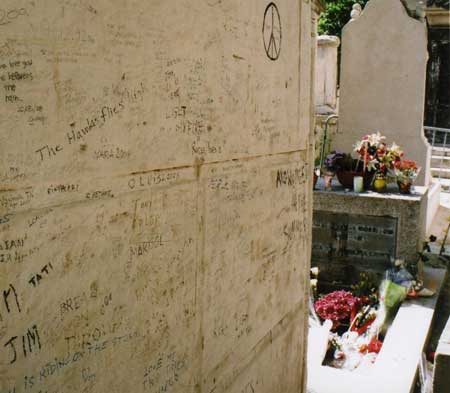An American in Paris, Permanently: The Death of Jim Morrison, July 3, 1971

Several Americans are interred at the Père Lachaise Cemetery in Paris, including dancer Isadora Duncan, author Gertrude Stein with Alice B. Toklas (together always, as in life), and, perhaps the most notorious, singer Jim Morrison, who died in Paris on July 3, 1971, under very mysterious circumstances.
The Doors, composed of Morrison, Ray Manzarek, Robby Krieger, and John Densmore, hit the charts over and over again with songs like “Light My Fire,” “L. A. Woman,” “Love Her Madly,” and the dramatic and wistful “Riders on the Storm.” Of the vision and experience of the 1960s, biographer Stephen Davis says, “No one had a clearer grasp of the complexities and ironies of the age than Jim Morrison.”
Although Morrison’s flame was bright and brief, his fame endures. Fortified by alcohol and serving as the poet/singer/raconteur for The Doors, Jim Morrison is recognized as a pillar of the first triumvirate of tragic rock stars. Along with the unexpected deaths of contemporaries Janis Joplin and Jimi Hendrix, Morrison’s death at the age of twenty-seven jarred the music world and propelled his legacy into the first pantheon of rock super-cultdom. His grave—and many, many nearby graves and tombs at the Père Lachaise—are covered with graffiti in tribute to Morrison. Resembling the walls at Graceland, with notes in dozens of languages, plus graphics, insignia and symbols drawn by Morrison’s devotees, have infected the entire district surrounding his grave; in order to prevent vandalism, administrators of the Père Lachaise were forced years ago to place a guard at the grave during hours of admission.
.
